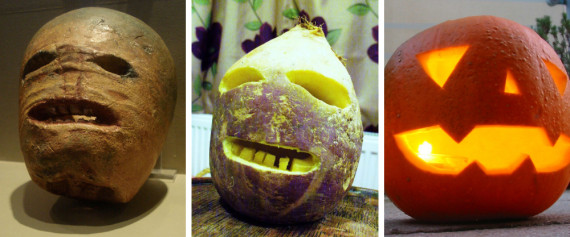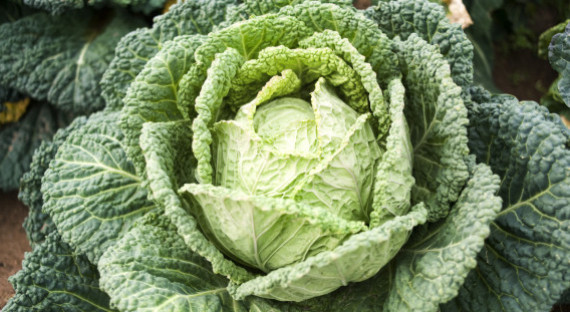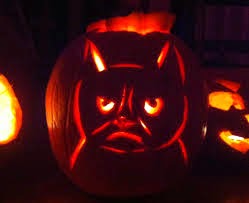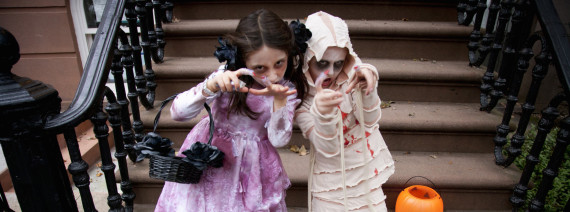Todd Van Luling, Amanda Scherker (HuffPoAshley Wells, CC Liu (eds.), Wisdom Quarterly
WARNING: Use of A-word! (Dead Kennedys 555) Conformist "Halloween" this year? "Because your role is planned for you/There's nothing you can do/But stop and think it through..."
 |
| On Halloween Mara asks Skull...Want to go out tonight? (Dorkthrone/flickr.com) |
WARNING: Use of A-word! (Dead Kennedys 555) Conformist "Halloween" this year? "Because your role is planned for you/There's nothing you can do/But stop and think it through..."
.
Halloween is a pretty bizarre holiday [for uptight Americans who love materialism in the guise of religion so get excited about four months of X-mas]: What other celebration could inspire both a Sexy Olaf costume and spooky drones?
Day of the Dead
HALLOWEEN IS WEIRD
 |
| Why does Wisdom Quarterly talk about scary things?! What about peace and lotus flowers? |
Day of the Dead
 |
| Mara is death; Yama is king |
(Día de Muertos) is a Mexican holiday observed in the U.S., Mexico, and around the world in a variety cultures by other names (i.e., Japanese Buddhist Obon). The holiday focuses on gatherings of family and friends to pray for relatives and friends who have died. (In Buddhism, there is also a ceremony to transfer merit to benefit the dead in the afterlife). The celebration takes place on October 31, November 1 and 2, in connection with the triduum of Allhallowtide: All Hallows' Eve, Hallowmas, and All Souls' Day. Traditions connected with the holiday include building private altars called offerings, honoring the deceased using sugar skulls, marigold flowers, and the favorite foods and beverages of the departed, and visiting graves with these as gifts. They also leave possessions of the deceased. More
HALLOWEEN IS WEIRD
That said, sexy snowmen can't hold a candle to sexy Halloween's truly bizarre origins. Chances are most Americans have no idea just how weird Halloween is, so here are eight facts to fix that:
1. Originally, you had to dance for your "treat"
1. Originally, you had to dance for your "treat"
 |
| Dance, beggar! Treats don't grow on trees. |
Most experts trace trick-or-treating to the European practice of "mumming," or "guysing," in which costume-wearing participants would go door-to-door performing choreographed dances, songs and plays in exchange for treats. According to Elizabeth Pleck's Celebrating The Family, the tradition showed up in America, where it would often take place on Thanksgiving.
 |
| Adult Halloween is about sex in the U.S. |
2. Halloween is more Irish than St. Patrick's Day

 |
| Mexican Day of the Dead cemetery (wiki) |
Halloween's origins come from a Celtic festival for the dead called Samhain [pronounced SAO-win].
Celts believe the ghosts of the dead (called pretas or "hungry ghosts" in Buddhism) roam Earth on this day, so people dress in costumes and leave "treats" out on their front doors to appease the roaming spirits.
This Halloween prototype was eventually disrupted and adapted by Christian missionaries into celebrations closer to what we celebrate today, including partly by the not-actually-Irish "Saint" Patrick, whose work was later mostly recognized by Americans.
- VIDEO: The world's most famous Irish Buddhist
- Alternative spiritualities, the New Age and New Religious Movements in Ireland
 |
| Brian, what do they mean sex? Halloween is all about candy! - Wait till you grow up, Stewie. |
This Halloween prototype was eventually disrupted and adapted by Christian missionaries into celebrations closer to what we celebrate today, including partly by the not-actually-Irish "Saint" Patrick, whose work was later mostly recognized by Americans.
"St. Patrick's Day was basically invented in America by Irish-Americans," says Prof. Philip Freeman at Luther College in Iowa. According to National Geographic, the holiday was only a "minor religious holiday" until the 1970s in Ireland. So it's not all that Irish, and St. Patrick probably wasn't Irish, his color was not green but a type of blue, and that story about banishing snakes is actually just a metaphor for his triumph over indigenous Irish Pagans, whose Paganism gave us Halloween.
3. Early Halloweens used animal skins and heads
 |
| Decorated horse skull: a modern Welsh version of the costume (wiki). |
According to ancient Roman records, tribes located in today's Germany and France traditionally wore costumes of animal heads and skins to connect to spirits of the dead.
 |
| JC Johnson on Coast to Coast |
This tradition continued into modern celebrations of Samhain, the Celtic holiday that inspired Halloween in the US. Merry-makers and pranksters often dressed as evil spirits simply by blackening their faces. The leader of the Samhain parades wore a white sheet and carried a wooden horse head or a decorated horse skull. Young people also celebrated by cross-dressing. without being accused of being gay or transsexuals.
4. Jack-o'-lanterns were once made out of roots not pumpkins
 |
| Use a beet, turnip, potato, or pumpkin to keep your candle burning in the wind (wiki). |
 |
| Angelic devils (asuras) also exist. |
Jack then put the devil, shaped like a coin, into his pocket, which also contained a silver cross that kept the devil from transforming back. Jack promised to free the devil as long as the devil would promise not to bother him for a year. And if he died, the devil could never claim him.
Jack tricked the devil again later, getting him to pick a piece of fruit out of a tree and then carving a cross into the bark when the devil was in the branches. This trick bought Jack another 10 years of devil-free living.
When Jack finally died, God decided he was not fit for heaven, but the devil had promised never to claim him for hell. So Jack was sent off to roam Earth with only a burning coal for a light. He put the coal into a turnip as a lantern, and Stingy Jack became Jack of the Lantern or "Jack o' Lantern."
Based on this myth, the Irish carved scary faces into turnips, beets, and potatoes to scare away Stingy Jack and other malevolent and/or mischievous spirits of the night.
Based on this myth, the Irish carved scary faces into turnips, beets, and potatoes to scare away Stingy Jack and other malevolent and/or mischievous spirits of the night.
5. Halloween used to be a great day to find a soulmate

 |
| Oh, spirits, whom will I marry? |
These games allegedly predicted who they would marry and when. Because Halloween, like Valentine's Day, was one of the main celebrations of the year where young people could mingle without chaperons, it was also considered a good day to scope out a sweetheart.
In America young people, particularly girls, continued the old Irish tradition. Games, like bobbing for apples, tried to predict future romances, according to the Oxford Encyclopedia of Food and Drink in America.
6. Halloween was originally "Cabbage Night"

In some American towns Halloween was called "Cabbage Night." This came from a Scottish fortune-telling game. Girls used cabbage stumps to predict information about their future husbands.
In early Framingham, Massachusetts, teens skipped the fortune-telling and simply went around throwing cabbage at their neighbors' houses, according to Framingham Legends & Lore. This was not an isolated tradition: In late 19th century America, country boys reportedly rejoiced in throwing cabbage, corn, and assorted rotten vegetables, according to Candy: A Century of Panic and Pleasure.
7. Animal shelters often have to protect black cats around Halloween for fear they'll be sacrificed, so no adoptions

 |
| It's Grumpy Cat everyone's favorite feline! |
Director Lynda Garibaldi at The Cats' Cradle in Morganton, North Carolina, tells The Huffington Post that the shelter "does not adopt out black cats during the month of October...because of superstition and the concern that the wrong people (who might harm them) might adopt them."
This type of ban is starting to wane, however. When reached for comment, Emily Weiss, vice president of Shelter Research and Development at the ASPCA, said: "Years ago, this used to be pretty common -- that shelters would not adopt out cats during Halloween for fear of something horrible happening to the cats, but we don't hear too much anymore. And many, many shelters are actually [holding] a special black cat promotion around the holiday."
ASPCA provided this list of a few of the black cat adoption promotions that have been tied to the holiday. As Weiss put it, "Most people who go to shelters to adopt a pet are not going to adopt a pet to sacrifice into ritual."
8. Studies have shown that Halloween actually makes people act more evil
 |
| Beware of creeps, kids, like your teachers and TV stars. And stop de-individuating! |
As io9 points out, putting costume-wearing kids into groups and introducing a clear object of desire, such as candy, has been shown to lead to "deindividuation."
 |
| VIDEO: Beware of Mama's dates, Honey Boo Boo & Co. You may be sent to foster home |
.
 |
| Rapist Megan Mahoney arrested on 30 counts |
One study in particular found that unsupervised costumed children in groups were far more likely to steal candy and money than both non-costumed kids and individual children not in a group.
A similar study found that masked children were significantly more likely to take more Halloween candy than they were supposed to if they believed there was no adult supervision. More from Huff Po
A similar study found that masked children were significantly more likely to take more Halloween candy than they were supposed to if they believed there was no adult supervision. More from Huff Po
 |
| Happy Buddhist Obon, Samhain, Dia de los Muertos (Day of the Dead), Halloween! |




















































































































































































































































No comments:
Post a Comment